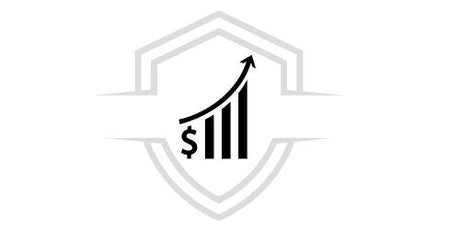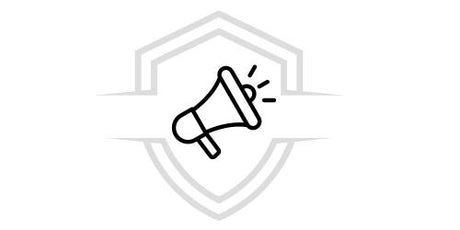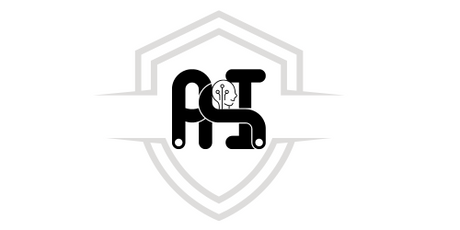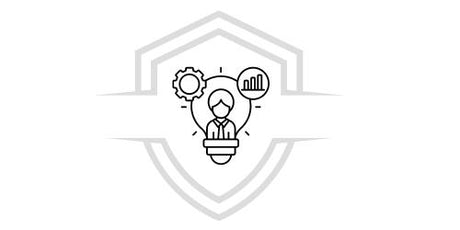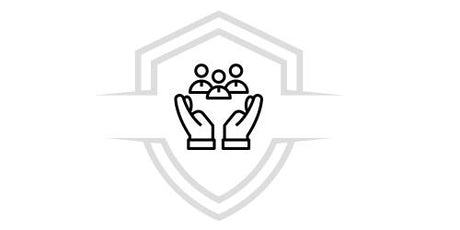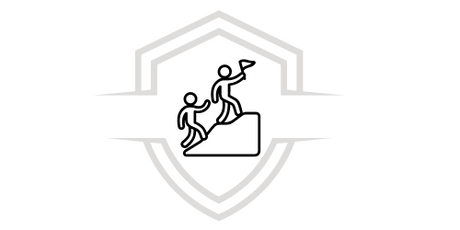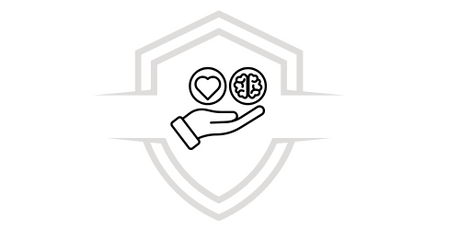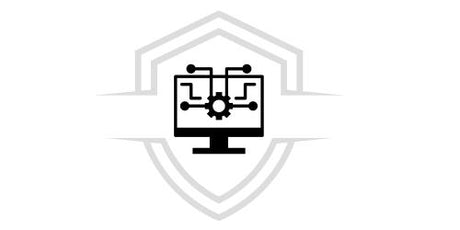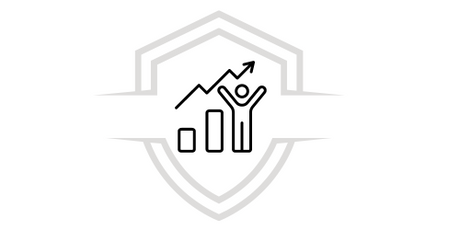Inbound marketing is a method that seeks to attract customers through the creation of valuable content and user experiences.
It applies non-intrusive digital advertising and marketing techniques to maintain communication with the user from the beginning of the purchasing process until the final sale.
The main objective of this methodology is to attract and convince your ideal clients through valuable content , taking into account where they are in the purchasing process, in order to personalize such content.
In short, it is about accompanying them throughout the entire process, from the moment they first hear about your brand, until you finally manage to close the sale. It is important to always be friendly and close to the customer, this will lead them to become loyal to your brand and they will become your loyal buyers.
Benefits of Inbound Marketing
You must keep in mind that inbound marketing is a long-term investment that will allow you to achieve the following benefits:
✔️ It positions the company as an expert in the sector and that can gain value over the years.
✔️ Makes use of organic and direct customer acquisition channels.
✔️ Generates a database of qualified contacts, which also grows over time.
✔️ Greater reach and community in relation to the brand.
✔️ Strengthens the image of the brand and the company, thanks to the number of visits and interactions achieved.
✔️ It allows you to automate some processes, which means permanent resource savings.
Inbound Marketing Assets
As we have already said, inbound is designed to grow, build and generate long-term benefits. Once you have started, we must ensure that it creates its own route through a series of assets that facilitate the work.
1. Positioning and Traffic Generation
Content marketing is the key to inbound marketing . Without good content, nothing makes sense within an inbound strategy that seeks to attract in order to sell.
One of the most important elements of inbound marketing is having a website with a blog. This should be kept up to date and contain good, informative and interesting content that responds to the needs or concerns of potential clients.
The intention of this is to attract traffic naturally through user searches on Google. This technique is known as SEO .
For SEO and inbound marketing to work hand in hand, these three points must be applied:
✔️ Keyword research: this is based on keyword research based on what your buyer persona is searching for.
✔️ On-page SEO: These are all the SEO techniques that you can apply to your website to improve the positioning of your content. This can vary from the structuring of the information, the title or the loading speed of the website.
✔️ Off-page SEO: These are positioning techniques that you can perform outside of your website, such as guest blogging or link building .
2. YouTube Channel and Podcast
Audiovisual content generates greater retention and has better engagement than written content. For this reason, it is essential that we make use of this type of format in our inbound strategy.
Podcasts are valuable content that is currently booming. This is the digital version of classic radio. Therefore, we recommend that you do not leave this content aside and we recommend that you have:
✅ A YouTube channel to upload brand videos.
✅ A podcast with regular publication frequency where you talk about new topics and interviews related to the area or topic you are addressing.
3. Content to Convert Visitors to Leads
The goal of content creation is not only to position yourself and attract traffic to your website, but it should also be part of the lead generation strategy.
This is achieved through downloadable content, which visitors do not have to subscribe to. If this anonymous traffic is interested in what you show them, they will leave their data and become leads. Some of these materials could be:
✅ Specialized ebooks .
✅ Reports or studies that provide new data on the area.
✅ Webinars related to topics of interest to users.
✅ Free trials of your product or service.
It is important that you pay attention to the form and the call-to-action button. The form must provide you with all the information necessary to capture a lead, so formulate the questions very well. And the call-to-action button must be eye-catching so that it generates the action we want.
20% EXTRA DISCOUNT
Get started today and get fully certified with our Inbound Marketing course
- 100% online at your own pace
- Practical exercises
- Lifetime Access
- Certified endorsed
Apply the coupon [DARE] and get an extra 20% discount for only 100 students. Click the button and join!
4. Database
The database is the one that contains the information of all your leads. This information is provided by them over time. Of course, they give this information as you build trust with them, since at the beginning, they will only give you their email address, but over time you may need more data. Having a database means having an audience that is interested in your brand and has agreed to receive information about your products or services and news.
5. Automation and Lead Nurturing
Generally, when a lead reaches you, it is not ready for the final sale, and that is where lead nurturing strategies come into play. The ideal is to personalize a series of automated communications for each lead so that they become loyal customers.
If you have a very large database, it is best to use a powerful marketing automation tool, this will guarantee the success of your strategy. In this way, you will be able to create an ecosystem that will do the work for you and guide leads through theconversion funnel .
6. Community
Social media has become a channel to generate a community around your brand. Therefore, your inbound strategy must include the use of those networks that are related to your buyer persona .
There are various strategies to increase the number of followers on social networks, such as raffles, promotions or the application of paid advertising Ads.
If we apply these strategies correctly, the number of users interested in what we are publishing will continue to grow. In this way, we will have a user base that is potentially interested in your brand and with the possibility of having a good conversion rate for the campaigns you carry out.
7. Brand Positioning
If the content you have created resonates with your audience, you will have succeeded in making a good impression on them. In the end, this will make the user remember your brand and lead to the creation of a bond beyond the commercial relationship.
As your positioning improves, this effort will translate into loyal customers in the long term, and then, it will be reflected in sales.
FREE DOWNLOAD
Download our free Inbound Marketing Ebook and enjoy learning with all the information we have for you. Learn how to improve your brand's reputation and position yourself as an innovative and outstanding product in the market.
Stages of Inbound Marketing
1. Attract
At this starting point, the objective is to get visitors. In this phase, we seek to get people to our digital media, whether blogs, social media, etc., to increase web traffic through the interest that our content will generate.
2. Convert
Here we are looking to get leads, that is, that the visitors you receive on your website end up registering. You must ensure that these leads leave you their data to classify them within the database. The way to achieve this is by creating registration or downloadable forms that respond to the questions, needs or concerns of your buyer persona .
To qualify them, you need to ask the right questions on the form so that with the answers you can identify whether the person is a potential client or not.
3. Sell
When there are already leads registered in your database, it is time to close the conversion to a client . It is time for them to buy our product or service, but you must avoid being aggressive and not stop providing the value that your users need. Content comes into play again in this part, only now in sales.
4. Build loyalty
A loyal customer is one of the best things a brand can have. You will have a higher chance of them buying from you again, compared to a new user. We want the customer to trust you and prefer us over the competition. If they become loyal customers of your brand, you will have ambassadors who will bring in new customers. Plus, a buyer will always value the opinion of another buyer more.
Become an Inbound Marketing expert and create successful strategies that will attract customers to your business
Courses that may interest you
Do you want to complement your Inbound Marketing knowledge to attract more customers? We recommend our Sales and Persuasion Techniques courses, Growth Marketing: Techniques, Strategies and Hacks.



